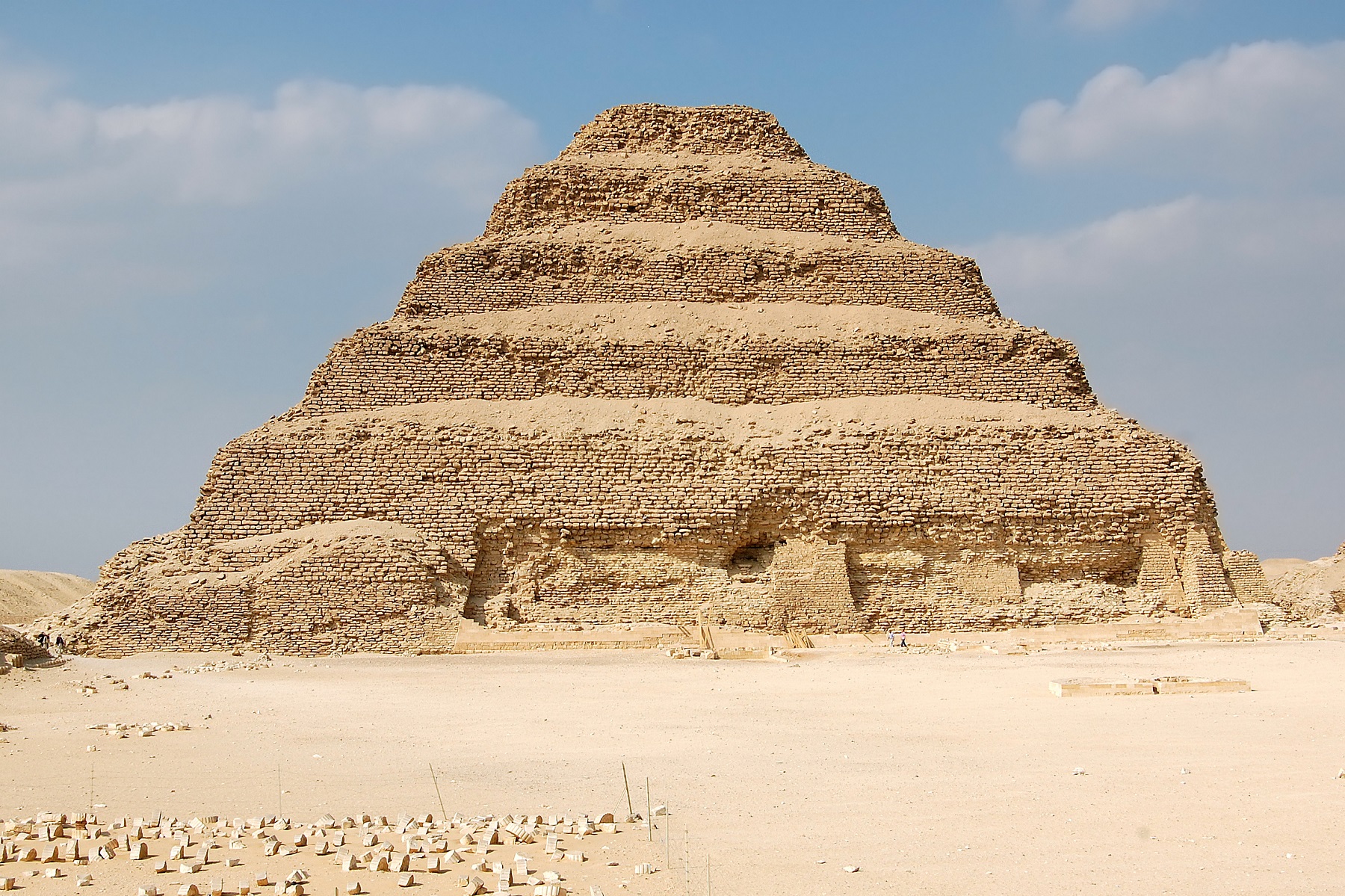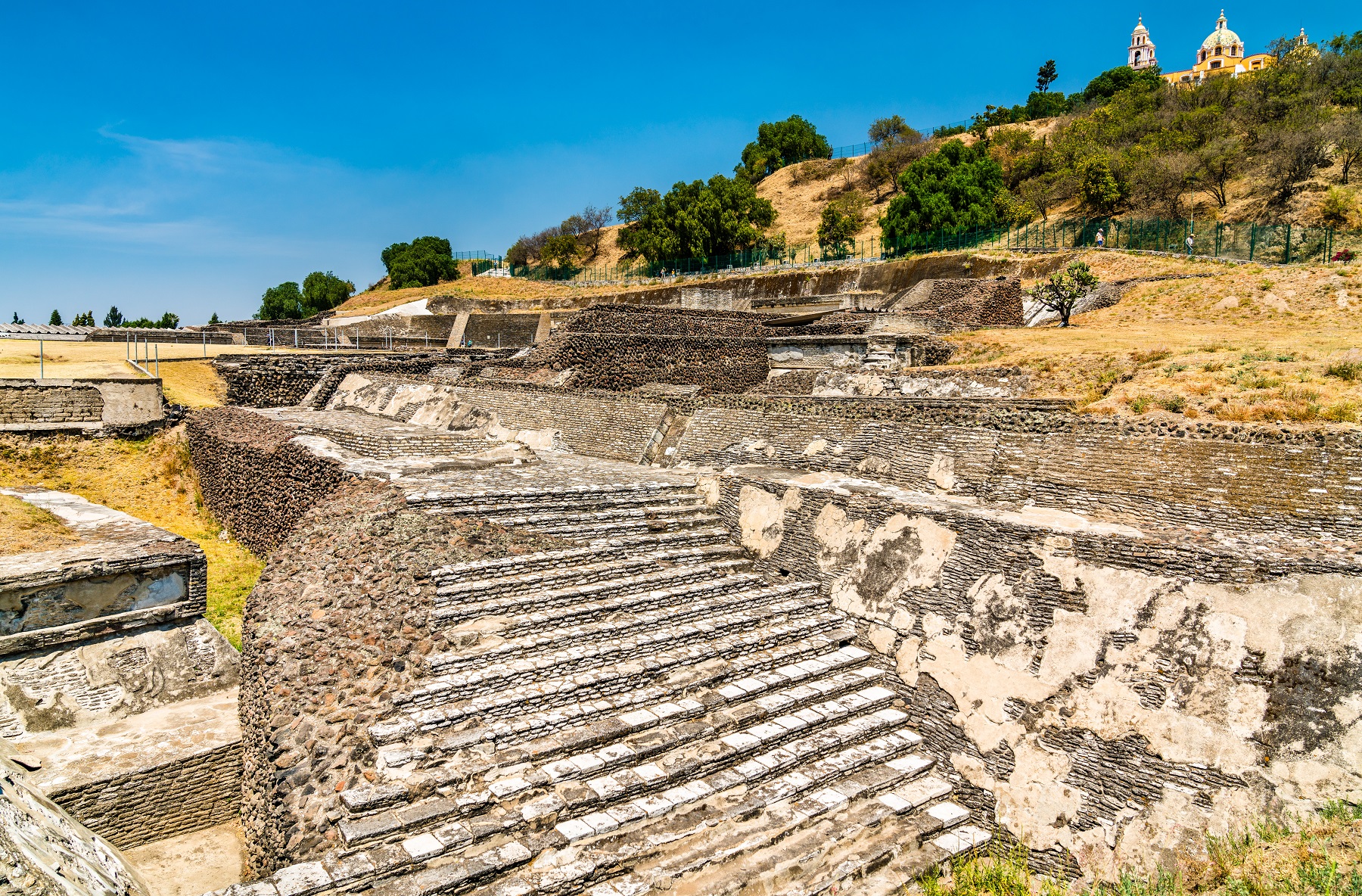- With a total volume of 4.45 million cubic meters, the Great Pyramid of Cholula is the largest pyramid and monument built on the surface of the planet.
- This means that the pyramid of Cholula is nearly twice as large as the Great Pyramid of Giza.
- Although no written accounts of the construction of the pyramid exist, experts estimate it was built starting from the 3rd century BC.
- The pyramid remains largely buried beneath a mountain, atop which the Spanish built a church that remains standing to this day.
There are thousands of pyramids scattered across the globe. Some are small, only a few meters high, while others are massive, rising towards the sky like a stairway leading into the cosmos.
Built for various purposes depending on cultures, pyramids are a global phenomenon. No matter where we look, we find how ancient civilizations erected pyramids throughout history.
Although the most famous pyramids are those of Egypt, the African country isn’t home to the most number of pyramids, nor is it home to the largest ones built on Earth.
The history of Pyramid building in Egypt can be traced back to a period around 2,700 BC when history books tell us that the Third Dynasty reigned over Egypt. During the reign of King Djoser, Egypt saw the birth of the first pyramid: the Step Pyramid of Saqqara.
It was a revolutionary, and awestriking building thought to have transformed architecture in ancient Egypt.
Considered the earliest colossal stone building, as well as the earliest large-scale cut stone construction in Egypt, Djoser’s revolutionary monument is thought to have been completed in no more than nineteen years, which probably means that the Pharaoh lived long enough to see his majestic pyramid complex complete.

A stunning image of the Step Pyramid of Djoser at Saqqara. It is considered the first pyramid of Egypt. Shutterstock.
With a total volume of 330,400 cubic meters (11,667,966 cu ft), the pyramid was a structure of never-before-seen size.
Not only that, but the entire pyramid complex was gigantic. Scholars argue that the Step Pyramid’ Complex was so large that once completed, it was about 2.5 times as large as the Old Kingdom town of Heirakonpolis.
Eventually, some of the elements of the Step Pyramid were carried over to future generations of Pyramid builders until Sneferu came to the throne.
He, just as Djoser, revolutionized Egyptian pyramid building. Sneferu is thought to have built three pyramids in total. Sneferu’s Red Pyramid at Dahshur—the first successful smooth-sided pyramid—laid down the foundation for the construction of the Great Pyramid of Giza, which Sneferu’s successor to the throne and son, Pharaoh Khufu is said to have eventually built, some 4,500 years ago.
Although the Pyramid of Sneferu, Khufu, and Menkaure were truly massive pyramids of the ancient, they are incomparable in size (volume) to pyramids that were built half-way around the world, in present-day Mexico.
There, thousands of years ago ancient cultures independently from the rest of the world devised massive monuments that were built honoring their gods.
The largest pyramid on Earth
The largest pyramid on Earth, even larger than the largest pyramid of Egypt, is a monument known in Mexico as Tlachihualtepetl (Nahuatl for “made-by-hand mountain”). Many people know it as the Great Pyramid of Cholula.
You may even have walked past it once, and probably never have noticed it is a pyramid. That’s because most of the pyramid is buried beneath the mountain atop which a colonial church stands.
Standing 55 meters (180 ft) above the surrounding plain, the pyramid measured in its final form 450 by 450 meters (1,480 by 1,480 ft). Unlike the Egyptian pyramids which are claimed (falsely?) to have served as gigantic tombs for the Kings (and eventually queens) of Egypt, the Pyramids built in present-day Mexico were temples that honored the different deities worshiped by cultures such as the Aztecs, Zapotecs, Teotihucani, Olmecs, and Maya among others.
Scholars believe that the pyramid of Cholula was built as a temple dedicated to the worship of one of the most important Mesoamerican deities in history, Quetzalcoatl, the feathered serpent.

An image of the buried pyramid of Cholula, and the Colonial Church built on its summit. Shutterstock.
Constructing such a massive pyramid was no easy task. It is estimated that the Great Pyramid of Cholula has a total volume of over 4.45 million cubic meters. Its incredible size means it is the largest pyramid and the largest monument constructed on the planet, according to the Guinness Book of Records.
With its 4.45 million cubic meters, Tlachihualtepetl is even larger than the Great Pyramid of Giza, which has an estimated total volume of approximately 2.5 million cubic meters. However, although the Pyramid of Cholula is much larger in terms of volume, the Great Pyramid of Giza is higher, standing at around 138.8 meters (455 ft).
As revealed by INAH archeologist María del Carmen Solanes Carraro, approximately 1,000 years before the arrival of the Spanish Conquistadores to Mexico, numerous, consecutive construction phases gradually built up the bulk of the pyramid, until eventually it became the largest ever constructed.
Although the entire pyramid complex has not been excavated—and probably never will in order to protect the colonial Church built on the pyramid’s summit—researchers believe that the builders of the pyramid constructed the complex in four distinct stages.
No written accounts of the construction of the pyramid exist. It is estimated that the first layers of the pyramid were placed around the 3rd century BC. Beneath the pyramid, archeological excavations have revealed a vast underground world composed of at least eight kilometers worth of tunnels leading to different areas beneath the gigantic structure.
The final form of the pyramid consists of six superimposed structures (similar, although much smaller compared to Djoser’s Step Pyramid). It is thought that each structure (step) was built by the ethnic group that dominated the city. Of the six superimposed structures, only three have been studied by archaeologists.
The pyramid was so large that the Postclassic Aztecs believed that the Pyramid of Cholula was erected by a giant called Xelhua.
Just as the pyramid was the largest of its kind, the city of Cholula was no smaller. In fact, it is estimated that at its peak, the city of Cholula was home to the second-largest population of Mexico, with more than 100,000 people living there.
The ancient city of Teotihuacan, which is not far from Cholula, is believed to have been the ancient city with the largest population in Mesoamerica. Both Cholula and Teotihuacan seemed to have declined simultaneously.
Historical records suggest that thousands of years ago, the natives of the region called the ancient city of Cholula Acholollan which in the Nahuatl language means place of flight.

